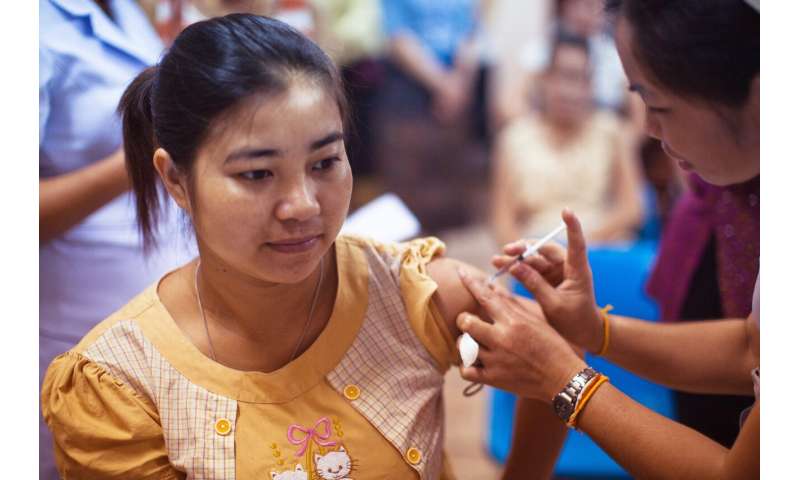‘No Jab, No Pay’ raises catch-up vaccination rates

The national “No Jab, No Pay” policy has been associated with substantial catch-up vaccination activity in lower socio-economic status areas in Australia, according to research published today by the Medical Journal of Australia.
Introduced on 1 January 2016, the policy extended the existing vaccination requirements for receiving federal family assistance payments by removing non-medical (conscientious objection) exemptions and tightening guidelines for medical exemption.
Researchers from the University of Sydney and the National Center for Immunization Research and Surveillance (NCIRS), analyzed data from the Australian Immunization Register on catch-up vaccination rates for:
- children aged five to less than seven years before (January 2013—December 2014; baseline) and during the first two years of “no jab, no pay” (December 2015—December 2017), and
- children aged seven to less than 10 years and young people aged 10 to less than 20 years (“No Jab, No Pay” period only).
They also examined catch-up vaccination rates for the second dose of measles–mumps–rubella vaccine (MMR2) in the latter two age groups, by Indigenous status and socio-economic status, and for the third dose of diphtheria–tetanus–pertussis vaccine (DTPa3) and the first dose of the measles-mumps-rubella vaccine (MMR1) in children aged five to less than seven years, before and after the introduction of ‘No Jab, No Pay’.
Key findings
- The proportion of incompletely vaccinated children aged five to less than seven years who received catch-up DTPa3:
- was higher under “No Jab, No Pay” than during the baseline period (15.5% vs. 9.4%).
- howeverthey also found a slight reduction in MMR1 catch-up (13.6% vs. 12.9%).
Of 407,332 incompletely vaccinated adolescents aged 10 to less than 20 years:
- 71,502 individuals (17.6%) received catch-up MMR2 during the first two years of ‘No Jab, No Pay’.
This increased overall coverage for this age group from 86.6% to 89.0%. MMR2 catch-up activity in this age group was greater in the lowest socio-economic status areas than in the highest socio-economic status areas (29.1% vs. 7.6%), and also for Indigenous compared to non-Indigenous Australians (35.8% vs. 17.1%).
“Our findings suggest that, while monetary sanctions are effective in promoting catch-up vaccination, their impact varies with socio-economic disadvantage,” concluded the authors, led by Dr. Frank Beard, NCIRS Associate Director, Surveillance, Coverage, Evaluation and Social Science, and Senior Lecturer at the University of Sydney.
“Moreover, the lack of change in MMR1 catch-up activity in children aged five to less than seven years suggests little impact on those who reject vaccination, and that expansion of age requirements was the more effective policy lever in this period.”said Dr. Beard.
Co-author Professor Julie Leask, NCIRS Professorial Fellow and University of Sydney expert on vaccination attitudes and behavior said:
Source: Read Full Article



